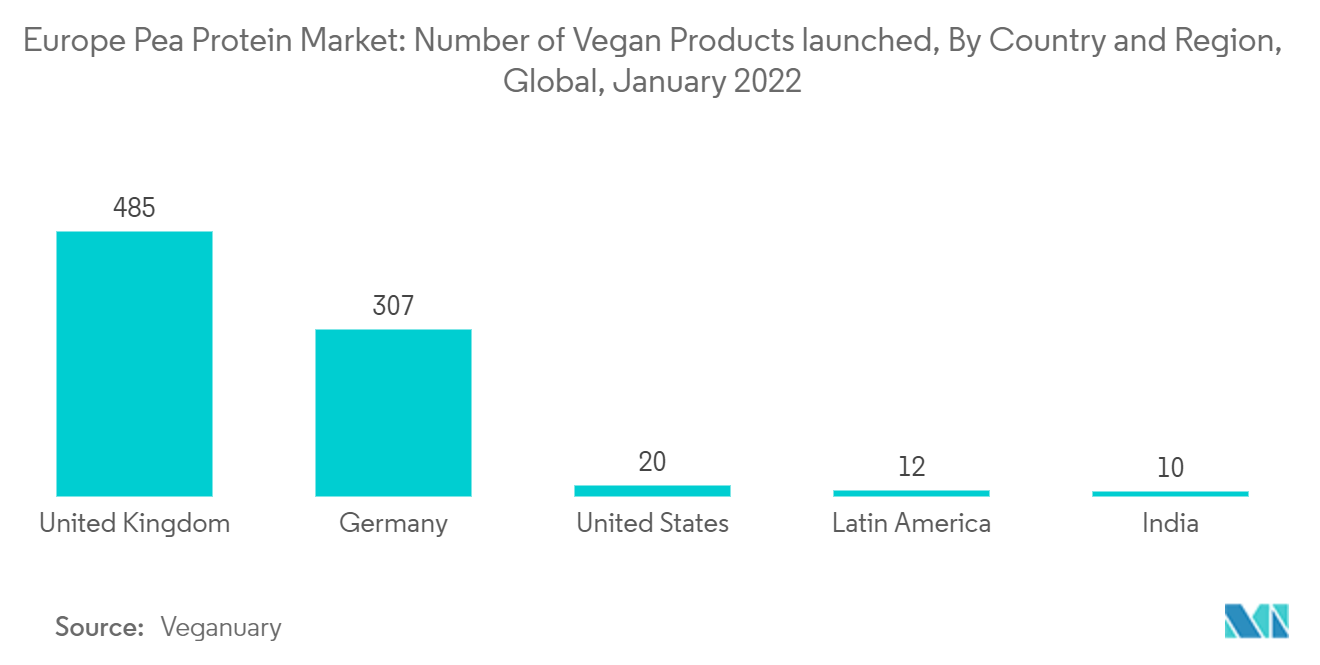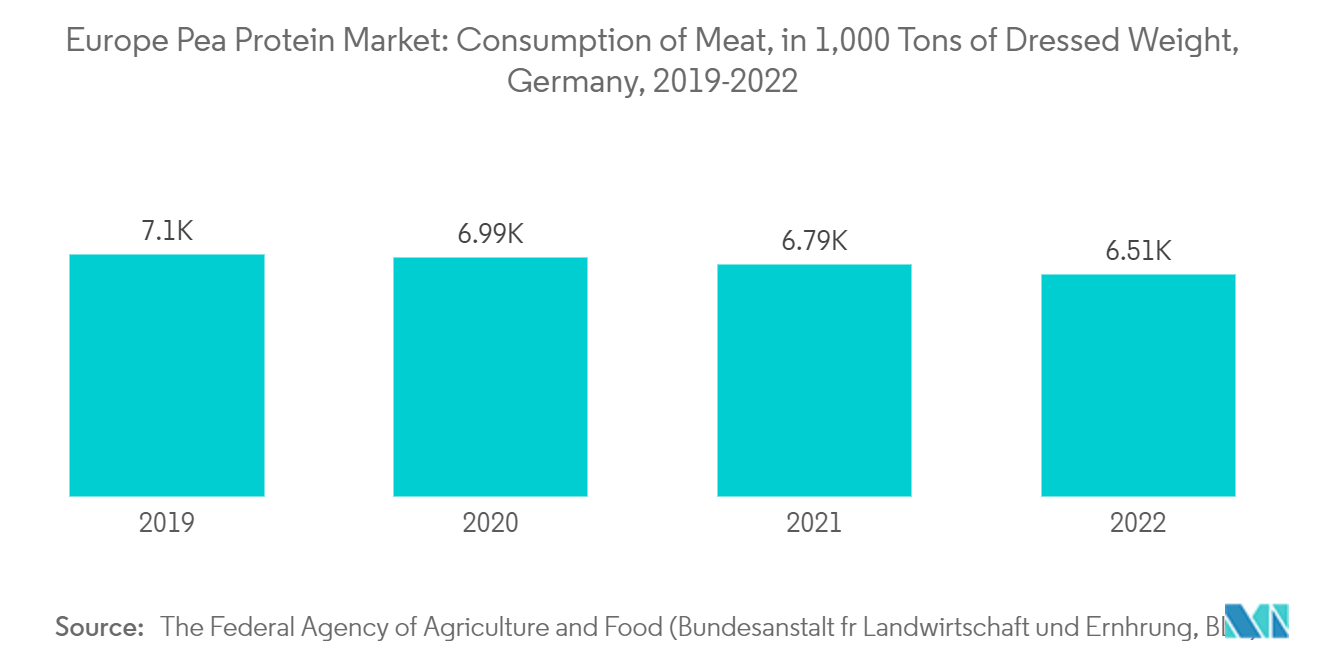Market Trends of Europe Pea Protein Industry
Growing Demand for Plant Based Alternatives
- Health-conscious consumers in the region are opting to consume vegan and plant-based food instead of meat and dairy products owing to different health conditions and environmental reasons. Also, there is an increased trend of consumers opting to consume plant-based milk instead of conventional milk products owing to lactose intolerance. In line with this, many protein players are offering ingredients with multiple application capabilities in both food and beverages, aiding manufacturers to incorporate plant-based ingredients like pea protein into their products.
- Additionally, growing awareness of environmental issues, such as climate change and resource depletion, has prompted consumers to look for more sustainable choices, thus supporting the market to grow. In line with this, plant-based alternatives have a lower carbon footprint and require fewer resources to produce compared to traditional animal agriculture.
- Moreover, plant-based milk is also available in various plant-based ingredients like grain proteins which are attracting more manufacturers to incorporate pea protein ingredients into their products and launch with attractive health claims. For instance, in January 2022, plant-based brand OZO launched pea protein-based plant-based products in the United Kingdom, claiming that these products offer a good source of protein alongside clean ingredients. Hence, the demand for pea protein ingredients is growing from various manufacturers in the region, and thus players operating in the region are focused on improving their presence in the region through expansions and acquisitions.
- For instance, in November 2021, Netherlands chemicals giant DSM agreed to buy Norwegian pea protein producer Vestkorn Milling in a deal worth EUR 65 million (USD 73.7 million). The company claimed this acquisition of Tau-based Vestkorn as a further step in DSM's strategy to build an alternative protein business. Hence, over the medium term, the market is expected to grow owing to the increasing demand for plant-based alternatives in the region.

Germany Holds the Largest Share in Pea Protein Market
- In Germany, plant-based diets are often perceived as healthier, with potential benefits like lower cholesterol levels and reduced risk of certain diseases. Also, due to changing food preferences and lifestyles, Germany has a growing number of vegan and vegetarian consumers. According to United States Department of Agriculture data from 2022, 1.5 million people in Germany are vegan, and in 2022, nearly 8 billion people in Germany followed a vegetarian diet. The young population in the country is eco-conscious, and they are aware of the environmental effects of meat consumption. Due to this, they are shifting their food preferences to vegan and vegetarian food, which is supporting the growth of the pea protein ingredients market.
- Additionally, pea proteins like textured proteins and isolates are used in food products due to their benefits like zero cholesterol and high protein, which is further raising its demand in the country. The product that is often incorporated with pea proteins includes plant-based meat alternatives, dairy-free options, and a wide range of plant-based snacks and convenience foods. Hence, with these increased applications and the need for pea protein, players in the country are focused on increasing their product portfolios and making the availability of pea proteins significantly high in recent years. For instance, in December 2022, Royal DSM launched Vertis, a textured pea canola protein in the country. The product was claimed to contain nine essential amino acids, and the product is soy-free and gluten-free.
- Furthermore, the increased demand for plant proteins like pea protein can be depicted by the fall in meat consumption in the country. For instance, according to the Federal Agency of Agriculture and Food (Bundesanstalt für Landwirtschaft und Ernährung, BLE), in 2022, around 6.5 million tons of meat were consumed in Germany, which was less compared to the year before. Figures varied during the specified period but have begun decreasing since 2018 without any rise.

